Log in to CMiC Field and click on RTI Maintenance under Real-Time Integration in the Treeview menu, as shown in the screenshot above.
Internal Site – Tab

The Internal Site tab is used to set up a name for your environment. This name will be shared with the other RTI users, which they will be entering as their External Site tab information.
NOTE: The Transmit Url field is not currently used.
Internal Adapter – Tab

The Internal Adapter tab is used to set up names and ID references for your adapters within your environment. This will be shared with the other RTI users which they will be entering as their External Adapter tab information.
This setup is also used to show the system/type and adapter protocols for the adapters you have selected to be used with your site.
External Site – Tab

The External Site tab is used to set up the reference to the other user system with which you will be using the RTI transmissions. There will be a separate external site for each “other” environment you may be connecting with.
External Adapter – Tab

The External Adapters tab is similar to the Internal Adapters tab; however, the values entered here are based on the other user site’s Internal Adapter tab configuration. (What you create as internal is their external and vice-versa.)
A drop-down list of external sites is provided. Ensure the correct site is selected prior to entering the adapter information you have received from them.
External IP Address – Tab

The External IP Address tab contains the External Site IP configuration, which is the mapping for the internet travel of RTI data to the other site. Complete either the Site FQDN field or the Site IP (recommended) field, and then specify which sites transmit/receive or both, as well as the port to use, J2EE Server name and whether the communication is secure (HTTPS) or non-secured (HTTP).
NOTE: When specifying a server’s URL, do not include the “http://” or “https://” portion of the URL, as that is done in the backend and will cause errors if specified.
Communication Links – Tab

The Communication Link tab is used for the final stage in the setup where you will be setting up the link code and names, and specifying which internal site/adapters will be communicating with the selected external site/adapters.
E-Mail – Tab

The Email tab is used to set up email folders as required for the relevant RTI adaptor.
NOTE: This tab is not used for CMiC to CMiC RTI transmissions.
Blackout Schedule – Tab
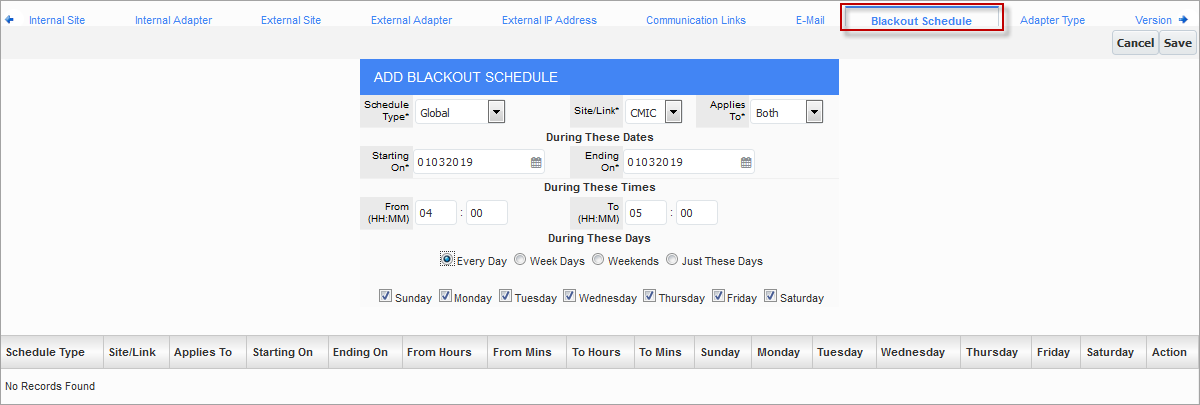
The Blackout Schedule tab allows for the configuration of settings to prevent communication attempts when the environments will not be able to receive. For example, the schedule of a blackout should be entered for both sending and receiving sites based on scheduled maintenance of servers, patch installation windows, or any other event that may prohibit success in transmission due to environments or databases being unavailable.
Multiple schedules can be entered as required.
Adapter Type – Tab
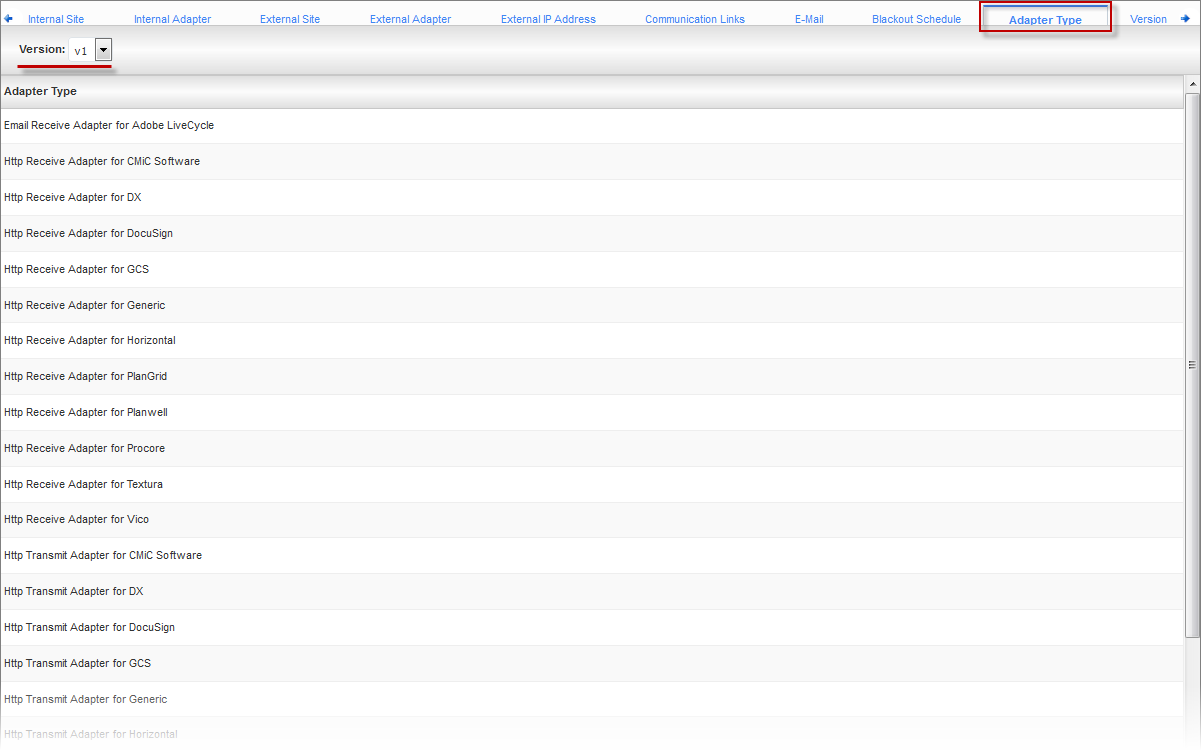
The Adapter Type tab is a display-only tab that shows which adapters are available for the version selected using the drop-down list in the Version field.
Version – Tab

The Version tab is a display-only tab that shows the versions available.
Resource – Tab
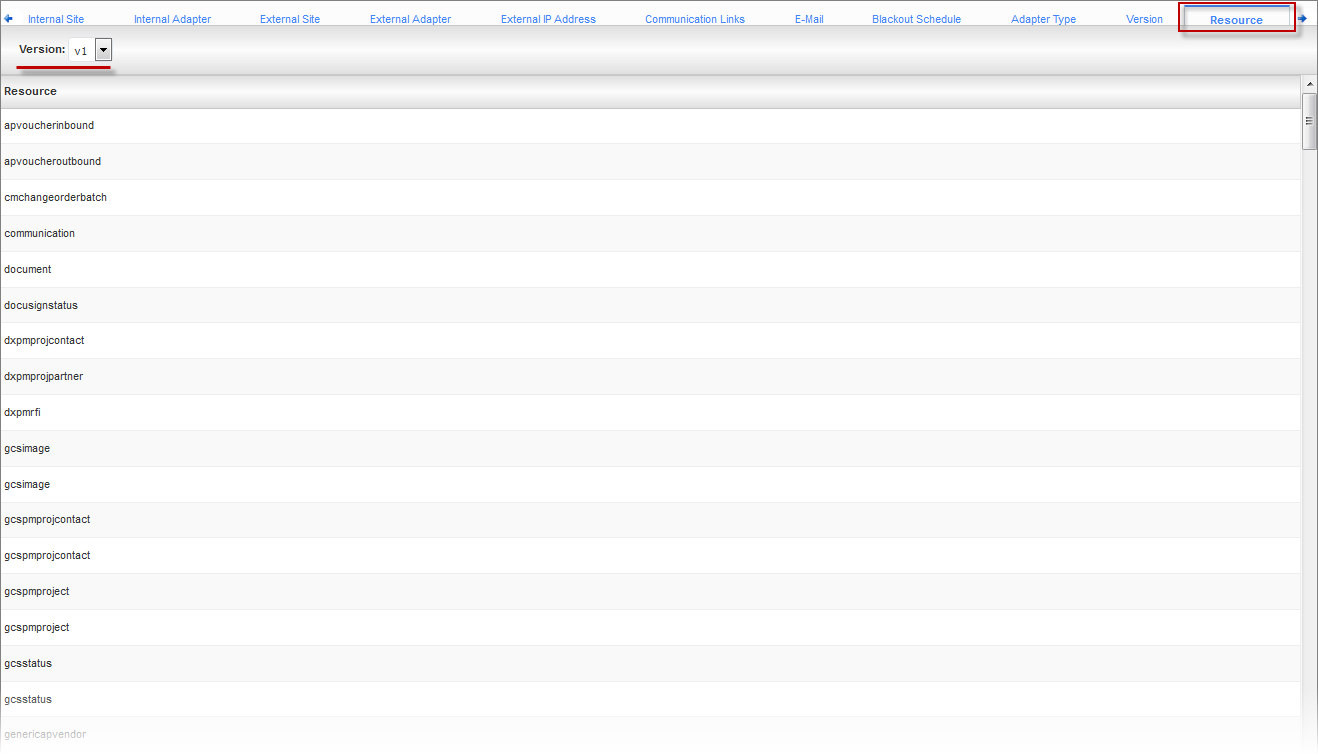
The Resource tab is a display-only tab shows the types of objects that may be transmitted using the version selected via the drop-down list in the Version field.
Software System – Tab
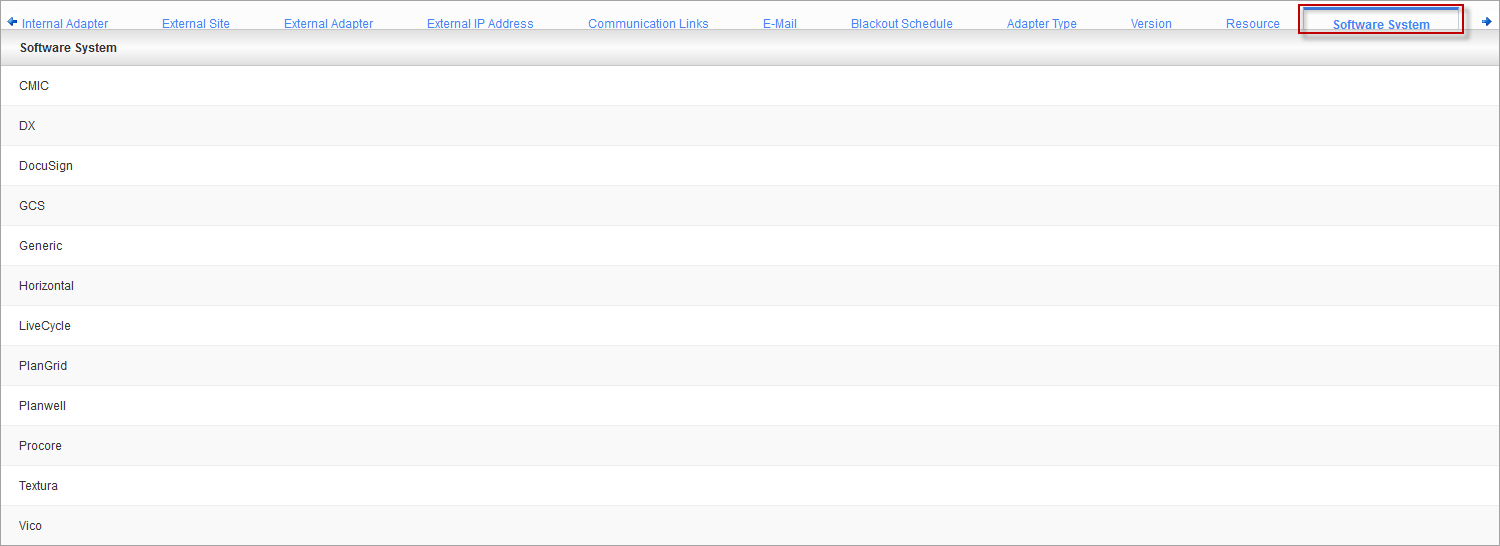
The Software System tab is a display-only tab shows the software systems available.
Resource Category – Tab

The Resource Category tab is a display-only tab lists resource categories in use by the various systems.
Software System By Category – Tab

For the system selected via the Software System field, this display-only tab lists its related resource categories.
Software System Resource By Category – Tab
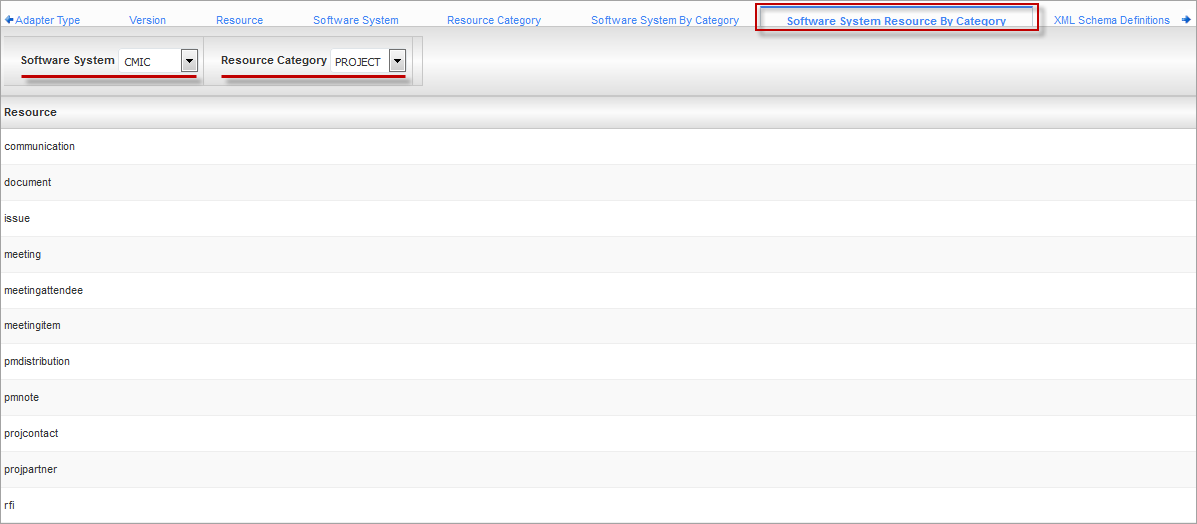
The Software System Resource By Category tab is a display-only listing of the system resources in use by the various resource categories for each of the software system types.
XML Schema Definitions – Tab
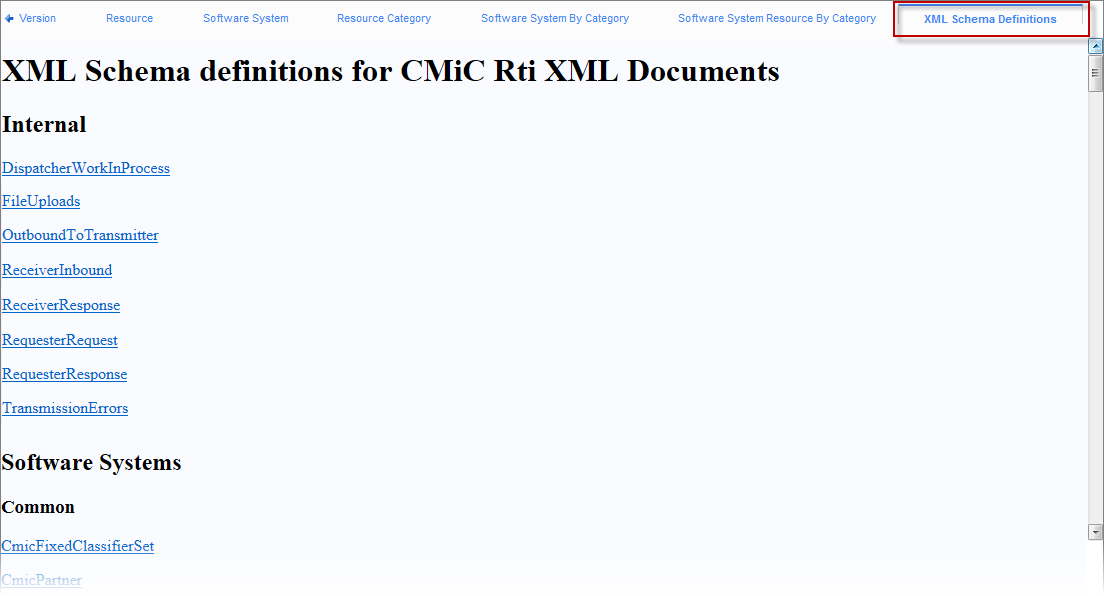
The tab is used to see the definitions being used in the XML interchange of the various items.
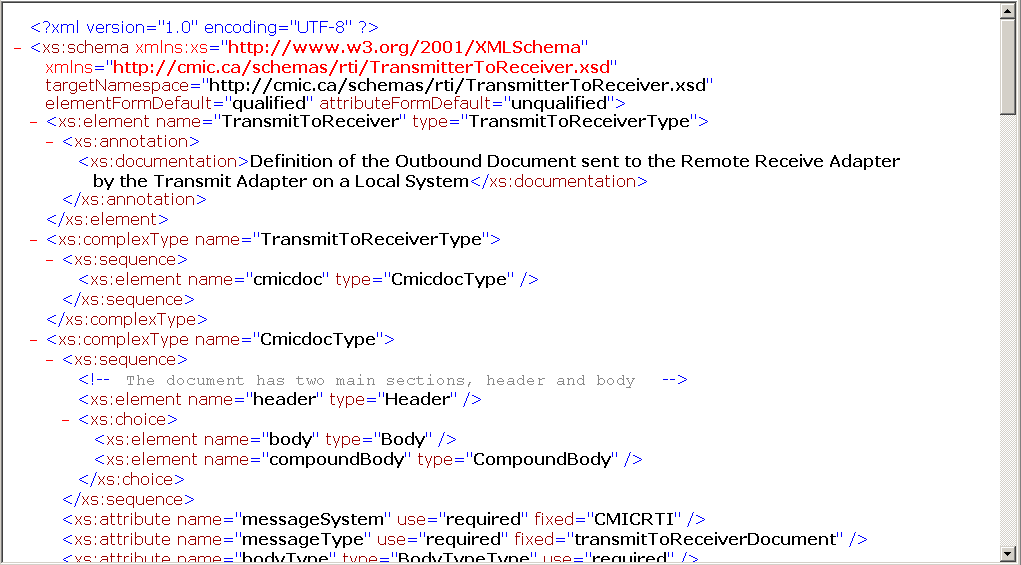
Example of XML Definition for CMiC Transmit To Receiver